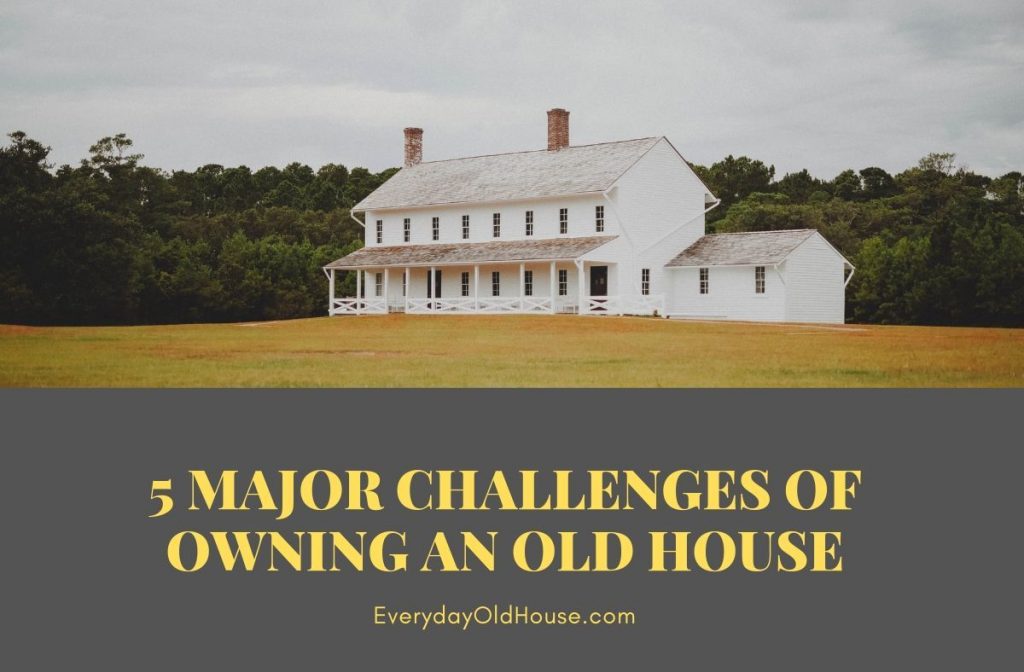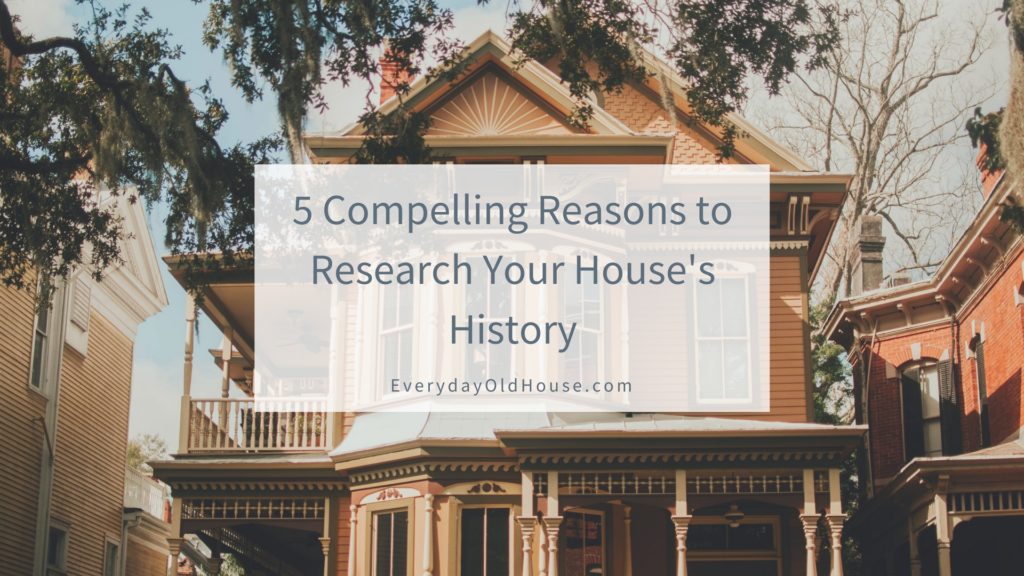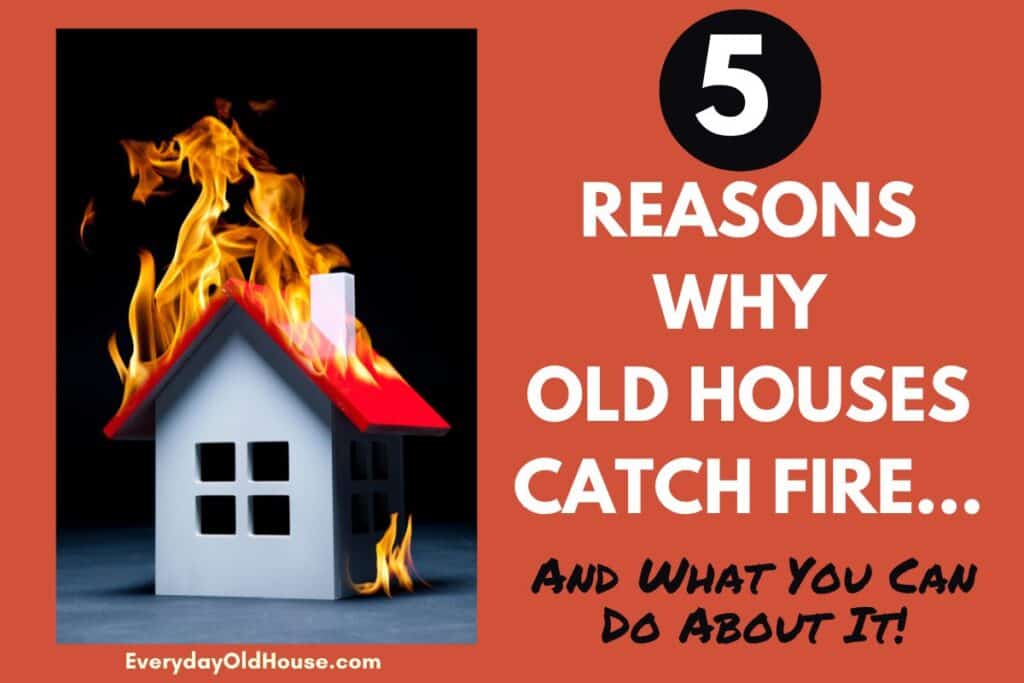Last Updated on January 5, 2024
Did you know that remodeling and renovating have two different meanings? (I didn’t…) And when most homeowners say “restore” they really mean “rehabilitate”? (I didn’t know that either….) But if you own an old house, understanding the difference in all these for “R” terms will help you (and your contractor) get clarity on how to tackle your home improvement projects. Let’s dig into the terms (with examples)..

This post contains affiliate links, including but not limited to, Amazon Associates. As such, I earn from qualifying purchases. Full disclosure located here.
Backstory (aka Why Am I Writing This?)
As part of my mission to learn more about owning an old house, I follow a variety of preservation experts and old house enthusiasts. There is a plethora of great information out there – through books, blogs or via social media and podcasts.
This particular post was inspired by Episode 7 (Are You Really “Restoring” Your Old House?) of the Old House Love podcast with an interview with Catilin Mee, a preservationist and professional architectural historian based in Georgia.
Unfortunately this podcast is no longer online ? BUT you can follow Caitlin on Instagram.
In the interview Caitlin gets into the nitty-gritty, defining and contrasting the true meanings of home improvement and preservation terms (e.g. rehab vs renovate). These terms easily get confused. Plus many preservation experts disagree with some definitions!
What’s In It For You? (aka Why Should You Read This Post?)
My intent for this post is for the average homeowner with an “everyday” old house (like me) is three-fold:
- To gain a basic, but more educated perspective on what these terms truly mean and how they differ
- To appreciate that most contractors and home improvement personalities use terms like rehav vs renovate interchangeably and shouldn’t; and
- To understand that if you are considering a home improvement project, knowing which term best reflects your goal will give your project a better chance for success.
Home on the National Register?
Before we go any further, I must mention the following. This post is NOT meant for homeowners with historic homes listed under the National Register of Historic Places.
These houses are held to a different and higher standard when it comes to home improvement projects.
If you own a historic home and are planning changes within your home, consult the right authorities before moving forward.
Rehab vs Renovate vs Remodel vs Restore – What’s the Difference?
Ok, let’s dive into 5 different terms that are important for homeowners of old houses to understand before starting a home improvement project:
- Preservation
- Restoration
- Rehabiliation
- Renovation
- Remodel
1. Preservation
For professional preservationists, this term is meant for preservation in its purist form. What does that mean? Let me explain…
A truly preserved home is completely hands off. Only minimal maintainance is allowed to keep the structure its current state or slow down deterioration. Stabilization projects are permitted if required to save the structure.
Nothing is added or removed. Nothing new also comes into the house – no new kitchen appliances, no updates to the bathrooms. It’s almost as if the house is “frozen in time”.
Example of Preservation
In other words, a “preserved” house is strictly for museum-type houses. As an example, Caitlin in the podcast refers to Drayton Hall in South Carolina, which is the oldest preserved plantation house in America still open to the public. It has been preserved back to the 18th century.
Homes that have been “preserved” are not habitable for today’s lifestyle. For the average homeowner, it’s just not realistic to preserve their old house.
2. Restore/ Restoration
This term is what personally I hear throughout the old house community, including contractors, home bloggers and network television (HGTV/ Magnolia). It’s morphed into a popular blanket term for any old house project.
And after listening to this interview with Caitlin, I realized that this term is widely used incorrectly.

Restoration is “picking a period of significance in the house’s history and restoring back to that time period”. Commonly, this means the time when the house was first constructed.
Examples of Restoration
- Replacing old fixtures with replicas (or salvage)
- Fixing old fixtures
- Removing drop foam ceilings
- Ripping up ugly old carpet to expose original wood floors
- Removing asbestos siding and restoring the original wood clapboard
If you want to restore a house or a building, then you are recovering the form and details of the structure back to a particular chapter in time.
This also means removing features from other periods in the house’s history.
Take a minute and re-read part of that last sentence – “removing features from other period in the house’s history”. What exactly does that mean? It means that if you are planning to restore the kitchen in your Craftsman home back to it original condition in the 1920s, you will say “Good-bye” to your dishwasher. ?
If you are doing a restoration project, there is ZERO sign of a technology or character that isn’t reflective of the original period of the house. Not very realistic, right?
Yet so many folks incorrectly say they are “restoring” their homes. So if old house enthusiasts aren’t restoring their homes, what are they doing? Apparently, they are rehabilitating them (see next section).
I should note that the term restoration can be nuanced among professionals. (Remember I noted above that professionals commonly don’t see eye to eye on these terms?).
Here’s an example.
The owners of an old house may decide to work with a professional preservationist or government preservation office to restore their house to the original construction date. However, there may be certain unique updates or details installed after the original update that are significant. Such as installation of tile from a historic local quarry. The professionals may consider these updates precious, worth saving and included as a “restoration”.
A bit confusing, eh? Let’s continue…
3. Rehab/ Rehabilitation
Rehabilitation is making an old house compatible for modern use (through repair and updates) while staying sympathetic to the features that show the historical, cultural, or architectural values.
In other words, the house looks “old” but has modern functionality.
Example of Rehabilitation
- Updating the bathroom’s plumbing to spec but leaving the clawfoot tub
- Installing period-appropriate kitchen cabinets that reflect the home’s Victorian style, plus a new dishwasher.
If you own an old house and are making alterations to make it more functional and livable for your modern lifestyle, BUT are sensitive to the historic features that define the character and history of the house, then you are rehabilitating your old house.
Feel like you’re getting the hang of it? Don’t. There’s more….. Keep reading.
4. Renovation
Renovation literally means “to make new or improve”. Its intention is renewing a building by fixing what already exists and often adding new pieces. It’s when a homeowner repairs or improves a portion of a house but doesn’t change the use of the room.
This term has focus on removing outdated building components and replacing with new elements. From a simple perspective, it’s the opposite of restoration. Renovation is moving forward and modernizing, while restoration is going back in time.
Examples of Renovation
- Updating an out-of-date kitchen with new cabinets and fixtures
- Replacing old windows with new
If you are looking to make updates and transform your old house into a more modern style, then you are undergoing a renovation. Preservationists and old house purists are not huge fans of this term, since renovation usually entails removing the original charm and character of the old house. (IMHO, why would you want to do that?!?!?! Just buy an new house instead!)
5. Remodel

Remodeling means “converting the structure or form of a building”. If you remodel a room or part of your home, you change its use.
Remember that the last term “renovate” does not include changing the use of the room, while “remodel” does. Renovate also tends to suggest repair, while remodeling doesn’t have that same focus. Think of remodeling like intensive redecorating.
Examples of Remodel
- Finishing a basement for a family room or converting the attic into a bedroom
- Expanding the square footage of a building
- Gutting, removing, or adding walls (removing walls to combine kitchen & living room for open floor plan)
- Raising ceilings
- Adding central air conditioning
Got it? Good! But here’s where it can get confusing…..
One Project Doesn’t Equate to Just One Term….
Here’s the kicker where I blow your mind. One home improvement project can actually incorporate more than one term. Huh?
For example, a home improvement project can include BOTH rehabilitation as well as restoration. For example, a bathroom where you are bringing the plumbing up to spec with new piping (rehabilitation), but buying a salvaged clawfoot tub to enhance the Victorian style of your house.
If you want to watch both rehabilitation AND restoration happen before your very eyes, check out Brett Waterman in Restored. Brett rehabilitates homes in the Southern California area by creating a beautiful space with modern functionality, while still keeping (and in many cases enhancing) its vintage character.

In every episode, Brett keeps his eyes peeled for cues to rediscover a home’s original charm during his initial walk-through. And he uses it as opportunity to restore some of the true character of the home (when feasible and within homeowner’s budget).
Final Thoughts….
In my humble opinion, I believe that a combination of rehabilitation AND restoration projects are so important to old houses. Why? Because it’s a perfect solution to creating an old house that is functional for a modern family, but still tipping a hat to the home’s history and charm (one of the many reasons to own an old house).
Learn More
If you want to dive deeper into preservation terminology, check out these two books.
- Historic Preservation Technology: Caitlin recommendation
- Keeping Time: Specifically, I recommend the Language of Preservation chapter. This book is one of my Favorite Books for Old House Enthusiasts.
Special Thanks
I want to thank Stacy over at Blake Hill House who gave this post a read-thru for me. She has A LOT of knowledge about restoring and rehabilitating old houses that you will enjoy. Plus she co-hosts another one of my favorite old house podcasts True Tales from Old Houses.
Related Posts
Want to be the first to know about new posts? Be sure to follow me on Pinterest, Facebook, Instagram or Twitter of even Etsy! Or better yet… Subscribe below!
My monthly (admittedly sometimes more, sometimes less….) emails are like receiving a unexpected letter from an old friend WITHOUT needing to put on your slippers and walk out to your mailbox…. See? I got ya, my friend!)
[Note: My posts are proudly connected to these amazing link parties full of DIY ideas and inspiration!]



Thanks so much for stopping by and for your kind comment!
Hugs,
Debbie